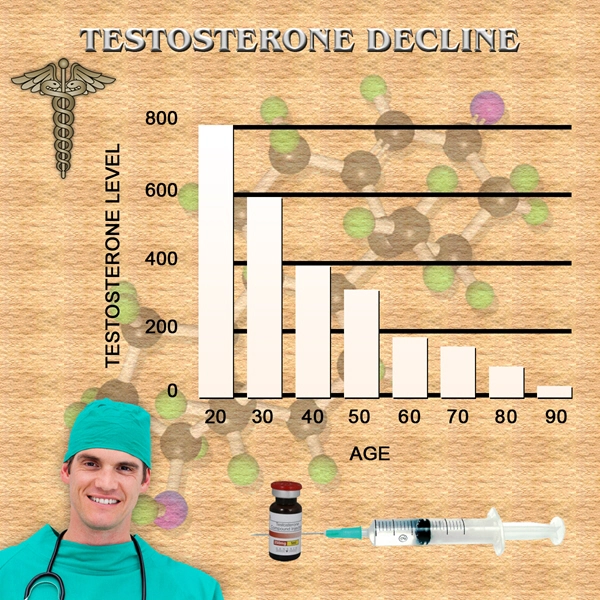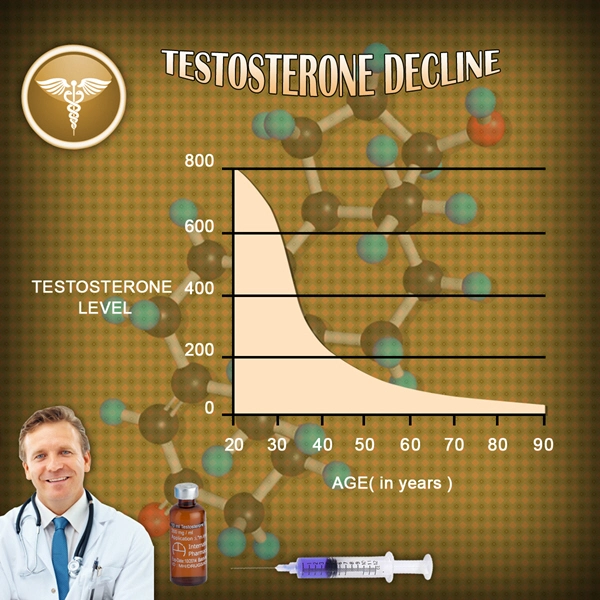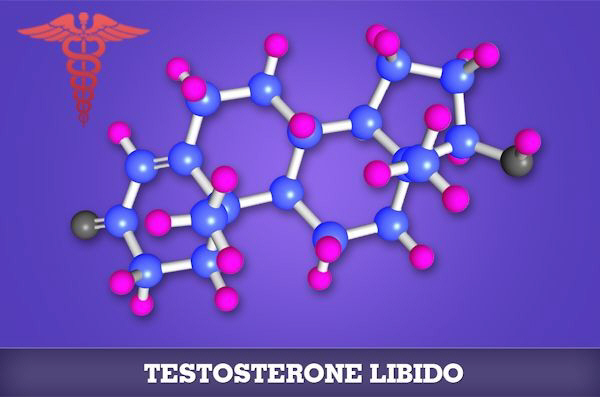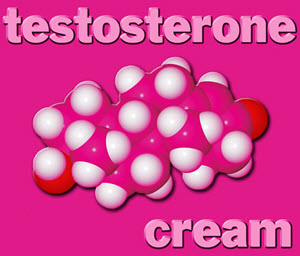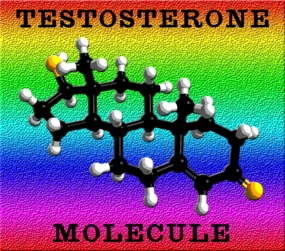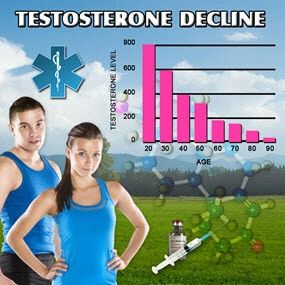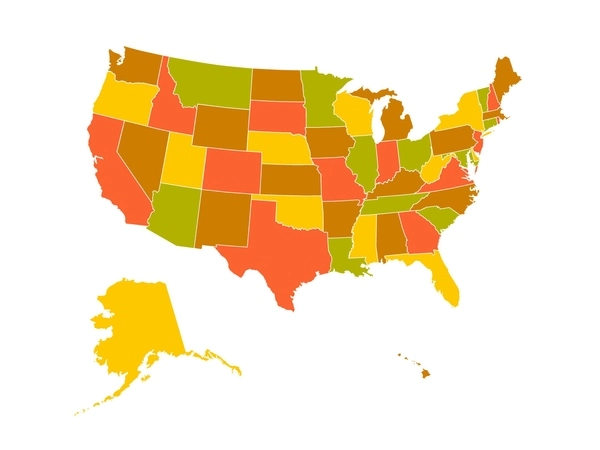Introduction
Non-alcoholic fatty liver disease (NAFLD) represents a significant health challenge among American males, characterized by excessive fat accumulation in the liver not caused by alcohol consumption. This condition can progress to more severe liver diseases, such as non-alcoholic steatohepatitis (NASH), fibrosis, and cirrhosis, thereby increasing the risk of liver failure and hepatocellular carcinoma. Recent research has explored various therapeutic interventions to mitigate the progression of NAFLD, with Sermorelin emerging as a potential treatment modality. Sermorelin, a synthetic analog of growth hormone-releasing hormone (GHRH), has been investigated for its ability to influence liver function and health. This article presents a case series that examines the impact of Sermorelin on liver function and health in American males diagnosed with NAFLD.
Background on Sermorelin and NAFLD
Sermorelin acts by stimulating the pituitary gland to release growth hormone (GH), which in turn influences various metabolic processes, including lipid metabolism. Given that NAFLD is closely linked to metabolic syndrome, the potential of Sermorelin to modulate lipid profiles and improve insulin sensitivity makes it a candidate for managing this liver condition. The rationale for using Sermorelin in NAFLD is supported by studies indicating that GH can reduce hepatic fat content and improve liver function markers.
Case Series Methodology
This case series included five American males aged between 40 and 60 years, all diagnosed with NAFLD based on imaging and elevated liver enzymes. Participants received Sermorelin therapy for six months, with liver function tests and imaging performed at baseline, three months, and six months. The primary outcomes measured were changes in liver enzyme levels (alanine aminotransferase [ALT] and aspartate aminotransferase [AST]), hepatic fat content, and insulin sensitivity.
Results and Observations
After six months of Sermorelin therapy, all participants showed a significant reduction in ALT and AST levels, indicating improved liver function. Hepatic fat content, assessed through magnetic resonance imaging, decreased by an average of 20% across the group. Additionally, improvements in insulin sensitivity were observed, as evidenced by lower fasting insulin levels and improved HOMA-IR scores. These findings suggest that Sermorelin may have a beneficial effect on liver health in males with NAFLD.
Discussion
The observed improvements in liver function and hepatic fat content following Sermorelin therapy in this case series align with the hypothesis that GH modulation can positively impact NAFLD. The reduction in liver enzyme levels and hepatic fat content indicates a potential role for Sermorelin in slowing the progression of NAFLD. Furthermore, the enhancement of insulin sensitivity is particularly relevant, given the strong association between insulin resistance and NAFLD.
However, it is essential to acknowledge the limitations of this case series, including the small sample size and the absence of a control group. Larger, randomized controlled trials are necessary to confirm these findings and establish Sermorelin's efficacy and safety in treating NAFLD.
Clinical Implications and Future Directions
The results of this case series suggest that Sermorelin could be a valuable addition to the therapeutic arsenal against NAFLD in American males. Clinicians may consider Sermorelin as a potential treatment option, particularly for patients who do not respond adequately to conventional therapies. Future research should focus on conducting larger studies to validate these findings and explore the optimal dosing and duration of Sermorelin therapy for NAFLD.
Conclusion
This case series provides preliminary evidence that Sermorelin may improve liver function and health in American males with NAFLD. While these findings are promising, further research is required to substantiate the role of Sermorelin in managing this prevalent liver condition. As the prevalence of NAFLD continues to rise, identifying effective treatments is crucial for improving patient outcomes and reducing the burden of liver disease in the American male population.
Contact Us Today For A Free Consultation

- Sermorelin: Enhancing Health in American Males Through Hormone Therapy [Last Updated On: February 18th, 2025] [Originally Added On: February 18th, 2025]
- Decoding Sermorelin: The Catalyst to Resuscitating Innate Growth Hormones [Last Updated On: February 25th, 2025] [Originally Added On: February 25th, 2025]
- Rejuvenating Your Prime: Harnessing Sermorelin to Revitalise Your Body's Growth Hormone [Last Updated On: February 26th, 2025] [Originally Added On: February 26th, 2025]
- Unveiling the Elixir of Life: Sermorelin’s Crucial Role in Counteracting Aging [Last Updated On: February 27th, 2025] [Originally Added On: February 27th, 2025]
- Unraveling Sermorelin: A Biotechnological Milestone in Contemporary Healthcare [Last Updated On: February 28th, 2025] [Originally Added On: February 28th, 2025]
- Regenerative Revival: Sermorelin's Role in Bolstering the Body's Innate Growth Hormone [Last Updated On: February 28th, 2025] [Originally Added On: February 28th, 2025]
- Reinventing Health Optimization: The Unveiling of Sermorelin's Innumerable Benefits [Last Updated On: March 1st, 2025] [Originally Added On: March 1st, 2025]
- Reconstructing Chronology: Can Sermorelin Reshape the Aging Process? [Last Updated On: March 2nd, 2025] [Originally Added On: March 2nd, 2025]
- Exploring Sermorelin: A Natural Alternative to Synthetic Human Growth Hormone for Anti-Aging and Regenerative Medicine [Last Updated On: March 3rd, 2025] [Originally Added On: March 3rd, 2025]
- Exploring Sermorelin Therapy for Enhanced Male Vitality and Health [Last Updated On: March 4th, 2025] [Originally Added On: March 4th, 2025]
- Unveiling the Multifaceted Health Advantages of Sermorelin in American Males [Last Updated On: March 5th, 2025] [Originally Added On: March 5th, 2025]
- Exploring Sermorelin Therapy for American Men: Enhancing Longevity and Quality of Life [Last Updated On: March 5th, 2025] [Originally Added On: March 5th, 2025]
- Exploring Sermorelin's Role in Hormonal Balance and Health for American Men [Last Updated On: March 6th, 2025] [Originally Added On: March 6th, 2025]
- Unlocking Vitality: Sermorelin Therapy for Enhancing Men's Health and Well-Being [Last Updated On: March 7th, 2025] [Originally Added On: March 7th, 2025]
- Unlocking Youthfulness: Sermorelin Therapy for American Males in Anti-Aging Medicine [Last Updated On: March 8th, 2025] [Originally Added On: March 8th, 2025]
- The Role of Sermorelin Therapy in Promoting Health and Vitality for American Males [Last Updated On: March 9th, 2025] [Originally Added On: March 9th, 2025]
- Unveiling the Power of Sermorelin: A Deep Dive into Its Biochemical Mechanisms [Last Updated On: March 12th, 2025] [Originally Added On: March 12th, 2025]
- Sermorelin: Enhancing Vitality in American Males Through Growth Hormone Therapy [Last Updated On: March 12th, 2025] [Originally Added On: March 12th, 2025]
- Unlocking Vitality: The Role of Sermorelin in Boosting Natural HGH Levels in American Males [Last Updated On: March 13th, 2025] [Originally Added On: March 13th, 2025]
- Unleashing the Power of Sermorelin: A Catalyst for Enhanced Healing and Recovery in American Males [Last Updated On: March 15th, 2025] [Originally Added On: March 15th, 2025]
- Sermorelin: Enhancing Vitality and Regeneration in Anti-Aging Medicine [Last Updated On: March 16th, 2025] [Originally Added On: March 16th, 2025]
- Sermorelin Therapy: Enhancing Health and Vitality in American Males [Last Updated On: March 17th, 2025] [Originally Added On: March 17th, 2025]
- Sermorelin: Enhancing Longevity and Vitality in American Males [Last Updated On: March 18th, 2025] [Originally Added On: March 18th, 2025]
- Sermorelin: Enhancing Health and Vitality in American Males Through GH Stimulation [Last Updated On: March 19th, 2025] [Originally Added On: March 19th, 2025]
- Sermorelin: Enhancing Cellular Youth and Vitality in Aging American Males [Last Updated On: March 20th, 2025] [Originally Added On: March 20th, 2025]
- Sermorelin: Enhancing Vitality and Health in American Males Through GH Stimulation [Last Updated On: March 20th, 2025] [Originally Added On: March 20th, 2025]
- Sermorelin: Enhancing Vitality and Cognitive Health in Aging American Men [Last Updated On: March 21st, 2025] [Originally Added On: March 21st, 2025]
- Sermorelin: Enhancing Health in American Males via Growth Hormone Stimulation [Last Updated On: March 21st, 2025] [Originally Added On: March 21st, 2025]
- Sermorelin Therapy: Enhancing Vitality and Health in American Men [Last Updated On: March 21st, 2025] [Originally Added On: March 21st, 2025]
- Sermorelin: Enhancing Health and Vitality in American Males Through Regenerative Medicine [Last Updated On: March 21st, 2025] [Originally Added On: March 21st, 2025]
- Sermorelin vs. HGH Therapy: Benefits, Risks, and Choices for American Males [Last Updated On: March 22nd, 2025] [Originally Added On: March 22nd, 2025]
- Sermorelin: A Promising Anti-Aging Solution for American Males [Last Updated On: March 22nd, 2025] [Originally Added On: March 22nd, 2025]
- Sermorelin Benefits for American Males: Enhanced Health and Vitality [Last Updated On: March 22nd, 2025] [Originally Added On: March 22nd, 2025]
- Sermorelin: Enhancing Vitality and Health in Aging American Males [Last Updated On: March 22nd, 2025] [Originally Added On: March 22nd, 2025]
- Sermorelin: Enhancing Muscle Repair and Performance in American Males [Last Updated On: March 23rd, 2025] [Originally Added On: March 23rd, 2025]
- Sermorelin: Enhancing Energy, Mood, and Metabolism in American Men [Last Updated On: March 23rd, 2025] [Originally Added On: March 23rd, 2025]
- Sermorelin Therapy Benefits for American Males: Case Studies and Future Prospects [Last Updated On: March 23rd, 2025] [Originally Added On: March 23rd, 2025]
- Sermorelin: Enhancing Health and Longevity in American Males Through Regenerative Medicine [Last Updated On: March 23rd, 2025] [Originally Added On: March 23rd, 2025]
- Sermorelin: Enhancing Vitality, Skin, and Hair Health in American Males [Last Updated On: March 23rd, 2025] [Originally Added On: March 23rd, 2025]
- Maximizing Sermorelin Benefits: Nutrition, Exercise, Sleep, and Stress Management for American Males [Last Updated On: March 24th, 2025] [Originally Added On: March 24th, 2025]
- Sermorelin: Enhancing Athletic Recovery and Performance in American Male Athletes [Last Updated On: March 24th, 2025] [Originally Added On: March 24th, 2025]
- Sermorelin: A Promising Solution for Chronic Fatigue in American Men [Last Updated On: March 24th, 2025] [Originally Added On: March 24th, 2025]
- Sermorelin: Enhancing Vitality and Health in American Males Through GH Stimulation [Last Updated On: March 24th, 2025] [Originally Added On: March 24th, 2025]
- Sermorelin Therapy: Enhancing HGH for American Males' Vitality and Health [Last Updated On: March 24th, 2025] [Originally Added On: March 24th, 2025]
- Sermorelin: Enhancing Sleep, Stress Management, and Vitality in American Males [Last Updated On: March 24th, 2025] [Originally Added On: March 24th, 2025]
- Sermorelin: Transforming American Males from Fat to Fit via GH/IGF-1 Enhancement [Last Updated On: March 25th, 2025] [Originally Added On: March 25th, 2025]
- Sermorelin: Boosting Energy and Fat Loss in American Males [Last Updated On: March 25th, 2025] [Originally Added On: March 25th, 2025]
- Sermorelin: Enhancing Hormonal Health and Vitality in American Men [Last Updated On: March 25th, 2025] [Originally Added On: March 25th, 2025]
- Sermorelin: Enhancing Cellular Repair and Tissue Regeneration in American Men [Last Updated On: March 25th, 2025] [Originally Added On: March 25th, 2025]
- Sermorelin: Enhancing Healthspan in American Males Through GH Modulation [Last Updated On: March 25th, 2025] [Originally Added On: March 25th, 2025]
- Sermorelin: Enhancing GH for Anti-Aging in American Men [Last Updated On: March 25th, 2025] [Originally Added On: March 25th, 2025]
- Sermorelin: Enhancing Performance and Health in American Males [Last Updated On: March 25th, 2025] [Originally Added On: March 25th, 2025]
- Sermorelin Therapy: Boosting HGH Naturally in American Men [Last Updated On: March 26th, 2025] [Originally Added On: March 26th, 2025]
- Sermorelin: Enhancing Tissue Healing and Regeneration in American Males [Last Updated On: March 26th, 2025] [Originally Added On: March 26th, 2025]
- Sermorelin and Sleep: Enhancing HGH Production in American Males [Last Updated On: March 26th, 2025] [Originally Added On: March 26th, 2025]
- Sermorelin: Boosting Vitality and Health in American Men [Last Updated On: March 26th, 2025] [Originally Added On: March 26th, 2025]
- Sermorelin: Enhancing Growth Hormone for American Males' Health Optimization [Last Updated On: March 26th, 2025] [Originally Added On: March 26th, 2025]
- Sermorelin Boosts Growth Hormone: Benefits and Safety for Aging American Males [Last Updated On: March 27th, 2025] [Originally Added On: March 27th, 2025]
- Sermorelin: Enhancing Hormonal Health in American Males Through Targeted GH Stimulation [Last Updated On: March 27th, 2025] [Originally Added On: March 27th, 2025]
- Sermorelin: Enhancing Men's Health with Modern Lifestyle Integration [Last Updated On: March 27th, 2025] [Originally Added On: March 27th, 2025]
- Sermorelin: Enhancing Post-Surgical Recovery in American Males [Last Updated On: March 27th, 2025] [Originally Added On: March 27th, 2025]
- Sermorelin: Enhancing Anti-Aging and Vitality in American Men [Last Updated On: March 27th, 2025] [Originally Added On: March 27th, 2025]
- Sermorelin Therapy: Enhancing Health with Diet and Exercise for American Males [Last Updated On: March 27th, 2025] [Originally Added On: March 27th, 2025]
- Sermorelin: Enhancing Growth Hormone in American Males for Vitality and Health [Last Updated On: March 28th, 2025] [Originally Added On: March 28th, 2025]
- Sermorelin: Boosting GH, IGF-1 for Health and Vitality in American Males [Last Updated On: March 28th, 2025] [Originally Added On: March 28th, 2025]
- Sermorelin Therapy: Benefits and Considerations for American Males [Last Updated On: March 28th, 2025] [Originally Added On: March 28th, 2025]
- Sermorelin Benefits for Men: Enhancing Health with Holistic Integration [Last Updated On: March 28th, 2025] [Originally Added On: March 28th, 2025]
- Sermorelin: Boosting Vitality and Energy in American Males Through HGH Stimulation [Last Updated On: March 28th, 2025] [Originally Added On: March 28th, 2025]
- Sermorelin: Enhancing Health and Vitality in American Men Through Peptide Therapy [Last Updated On: March 28th, 2025] [Originally Added On: March 28th, 2025]
- Sermorelin: Enhancing Metabolic Health and Vitality in American Men [Last Updated On: March 29th, 2025] [Originally Added On: March 29th, 2025]
- Sermorelin: Enhancing Appearance and Confidence in American Males Through GH Stimulation [Last Updated On: March 29th, 2025] [Originally Added On: March 29th, 2025]
- Sermorelin Therapy: Enhancing Vitality and Health in American Males [Last Updated On: April 2nd, 2025] [Originally Added On: April 2nd, 2025]
- Sermorelin Therapy Side Effects: Guide for American Males [Last Updated On: April 2nd, 2025] [Originally Added On: April 2nd, 2025]
- Sermorelin Therapy: Enhancing Men's Health with Personalized Dosing Strategies [Last Updated On: April 3rd, 2025] [Originally Added On: April 3rd, 2025]
- Sermorelin Therapy Integration for Hormonal Balance in American Males [Last Updated On: April 5th, 2025] [Originally Added On: April 5th, 2025]
- Sermorelin: Enhancing Vitality and Youthfulness in Aging American Men [Last Updated On: April 7th, 2025] [Originally Added On: April 7th, 2025]
- Sermorelin Therapy: Enhancing Vitality in American Men - Real-Life Testimonials [Last Updated On: April 7th, 2025] [Originally Added On: April 7th, 2025]
- Sermorelin: Revolutionizing Recovery for American Males Through HGH Stimulation [Last Updated On: April 8th, 2025] [Originally Added On: April 8th, 2025]
- Sermorelin: Enhancing Vitality and Health in American Males Through Regenerative Medicine [Last Updated On: April 9th, 2025] [Originally Added On: April 9th, 2025]
- Sermorelin: Enhancing Vitality and Health in American Men Through Hormonal Balance [Last Updated On: April 9th, 2025] [Originally Added On: April 9th, 2025]
Word Count: 598

